Why Do You Need a Personal Website?
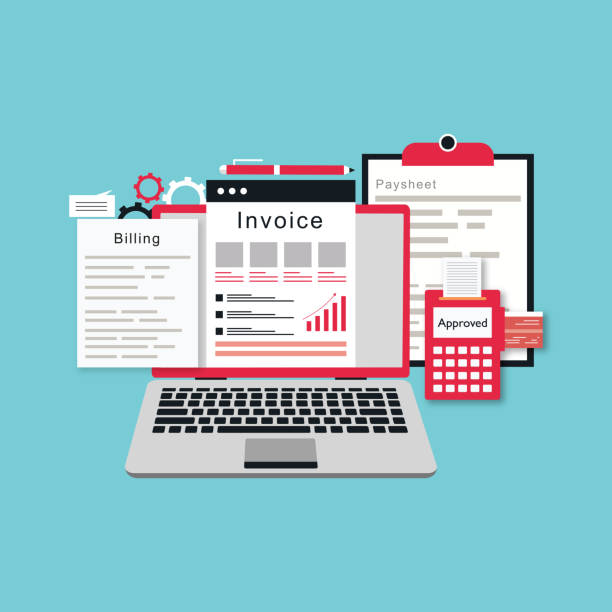
In today’s world, where communication boundaries are rapidly expanding, designing a personal website is no longer a luxury choice, but a necessity for every individual or business.
This digital platform is a gateway to countless opportunities, providing strong #personal_branding, continuous #online_presence, and effective #digital_communication.
Think of it as an online resume that is always accessible and, beyond dry text, can showcase your portfolio, projects, and even your personality.
A personal website allows you to present your skills and expertise in an engaging and interactive way that is not possible with a printed resume or social media profile.
This platform enables you to tell your story, share your experiences, and increase your credibility in your specialized field.
Furthermore, having a personal website gives you complete control over your content and messages.
Unlike social platforms that have their own rules and algorithms, your website is a domain entirely owned and controlled by you.
This freedom of action is especially important for many content creators, freelancers, and entrepreneurs.
From an analytical perspective, a personal website is a powerful tool for collecting data and understanding your audience; you can find out who visits your site, which pages they like best, and how they engage with your content.
This information helps you improve your content and intelligently adjust your strategies.
Also, for many individuals, having a personal website is an opportunity to #skill_development in web design, SEO, digital marketing, and even writing.
This learning path can significantly contribute to your professional growth.
A personal website is not just a resume, but a comprehensive information hub about you that allows your audience to connect with you.
Are your e-commerce site visitors leaving before making a purchase? Don’t worry anymore! With Rasaweb’s professional e-commerce website design services, solve the problem of converting visitors into customers forever!
✅ Significant increase in conversion rate and sales
✅ Exceptional and engaging user experience
⚡ Contact us now for a free consultation!
Initial Steps in Personal Website Design
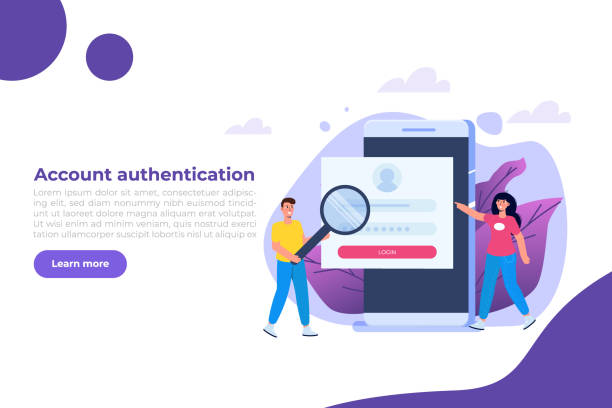
The first step in personal website design is defining your goal and audience.
Before starting any technical work, you must answer these questions: Why are you building this website? Is its purpose to showcase a portfolio, share knowledge, write a blog, or even sell products? Who is your audience? This deep understanding of your goal and audience will clearly define your path in content selection, design, and even platform.
For example, if you intend to have an educational blog about web programming, the tone and structure of your site will be completely different from an artistic portfolio site.
After clarifying the goal, it’s time to choose a domain name and hosting.
The domain name is your website’s address on the internet (like example.com) and should be short, memorable, and relevant to your name or brand.
It is recommended to choose your domain name carefully as changing it in the future can be complicated.
Hosting, or web hosting, is the space where your website’s files and data are stored and are always accessible to users.
Choosing a reliable and trustworthy host is crucial for your website’s stability and speed.
This section involves specialized aspects that require research and study.
Many hosting companies offer various packages with different features and prices; it’s important to choose a package that meets your current and future needs.
As a guide, pay special attention to bandwidth, disk space, support, and uptime.
These initial steps lay a strong foundation for building your personal website.
Choosing the Right Platform and Tools
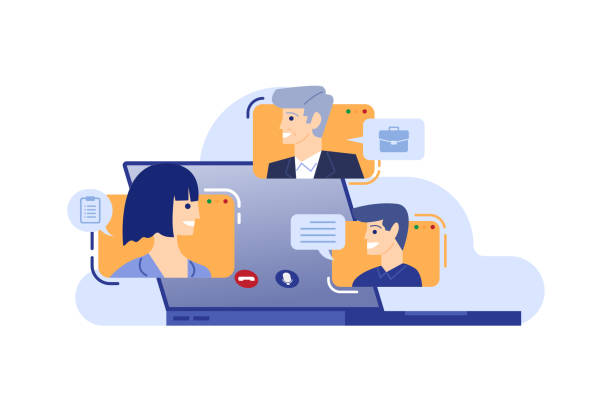
Choosing the right platform for personal website design is one of the key decisions that will significantly impact your site’s development and management process.
There are numerous options available, each with its own advantages and disadvantages.
Content Management System (CMS) platforms like WordPress are very popular options.
WordPress, due to its high flexibility, countless plugins and themes, and large user community, is suitable for most needs; whether you want a simple blog, a professional portfolio, or even a small online store.
Learning to work with WordPress, although it requires time, has abundant educational resources available.
In contrast, website builder platforms like Wix and Squarespace are ideal for individuals who lack coding experience and are looking for a quick and easy solution.
These platforms, with their Drag-and-Drop user interface and ready-made templates, allow for building a beautiful website in a short time.
Of course, their flexibility is less than open-source CMSs like WordPress.
Another option is manual coding using HTML, CSS, and JavaScript, which provides maximum control and customization, but requires deep technical knowledge.
The choice of tools and platforms should be based on your technical knowledge, available time, and long-term goals.
This decision will be the foundation of the entire personal website building process.
Comparison Table of Personal Website Design Platforms:
| Platform | Ease of Use | Flexibility | Approximate Cost (Monthly) | Suitable For |
|---|---|---|---|---|
| WordPress | Medium (requires learning) | High | NULL – NULL (host and plugins) | Blog, Portfolio, Small Business |
| Wix | High (Drag-and-Drop) | Medium | NULL – NULL | Quick Personal Sites, Small Businesses |
| Squarespace | High (professional templates) | Medium | NULL – NULL | Artists, Photographers, Portfolios |
| Manual Coding | Low (requires technical knowledge) | Very High | Host costs only (from NULL) | Developers, Specific Projects |
The Importance of Content on Your Personal Website
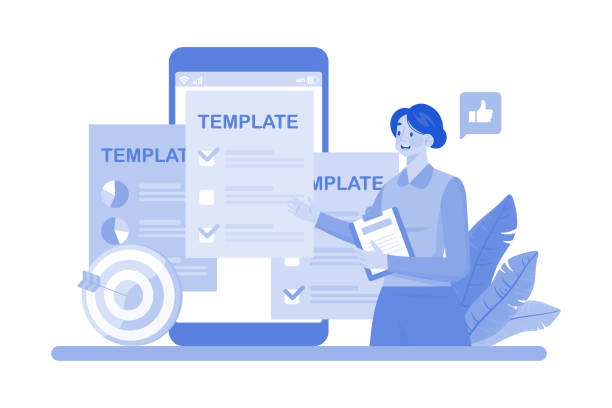
In the process of personal website design, content plays the king.
A website without valuable content is like an empty shop window that attracts no visitors.
Your content must be original, engaging, and relevant to your website’s goals and audience.
If your website is for showcasing your resume and portfolio, the textual content should be a comprehensive description of your projects, skills, and achievements, along with high-quality images or links to practical projects.
If you intend to blog, your content should be a mix of specialized, educational, news-related, or even entertaining articles that answer audience questions and create added value.
Also think about thought-provoking content; articles that raise common challenges or issues in your field and offer new perspectives.
This type of content can increase discussion and engagement on your site.
Furthermore, explanatory content for clarifying complex concepts and guiding content for providing practical solutions to users are of high importance.
The visual quality of content is as important as the text.
Images, videos, and infographics can strengthen your message and improve the user experience.
Don’t forget about SEO rules for content; using relevant keywords, proper text structuring with headings and subheadings, and internal and external linking all help your content be seen.
Remember that content should be updated regularly to maintain your site’s freshness and credibility.
A strong content strategy will be the main driving force behind the success of your personal website.
Are you dissatisfied with the low conversion rate of visitors to customers on your e-commerce site and not achieving your desired sales?
Rasaweb is your specialized solution for having a successful e-commerce site.
✅ Significant increase in visitor-to-customer conversion rate
✅ Creating an excellent and user-friendly experience to gain customer trust
⚡ Get a free consultation!
Search Engine Optimization (SEO)
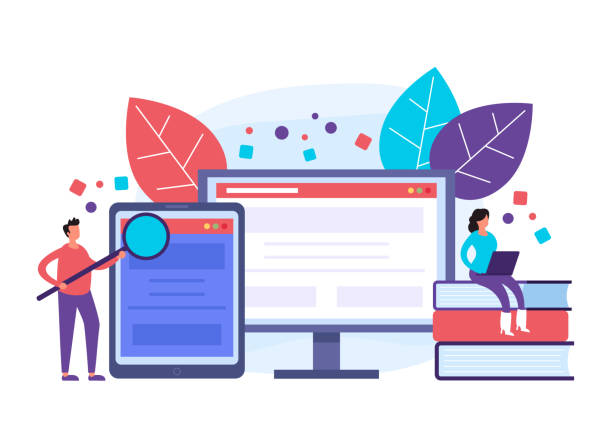
One of the most important steps after completing your personal website design is optimizing it for search engines, or SEO.
SEO is a process that helps your website rank higher in Google and other search engine results, thereby attracting more organic traffic.
This is a highly specialized aspect that includes several key elements.
The first step is keyword research; that is, identifying the phrases and words your target audience searches for to find content similar to your website.
These keywords should be used naturally in your titles, body text, meta descriptions, and URL addresses.
SEO is not limited to keywords alone.
Technical SEO includes items such as site loading speed, responsiveness (mobile compatibility), proper URL structure, sitemap, and robots.txt file.
Ensure your website loads quickly, as slow speed can lead to loss of visitors and a drop in SEO ranking.
Google PageSpeed Insights is an excellent tool for checking your site’s speed.
On-Page SEO is the optimization of elements within your website, such as image optimization, use of Heading tags (H1, H2, H3), internal linking, and improving content quality.
Finally, Off-Page SEO primarily refers to building high-quality backlinks from other reputable websites, which increases your site’s credibility with search engines.
Remember that SEO is a continuous process, and its results may take time, but it is essential for the visibility of your personal website.
Responsive Design and User Experience
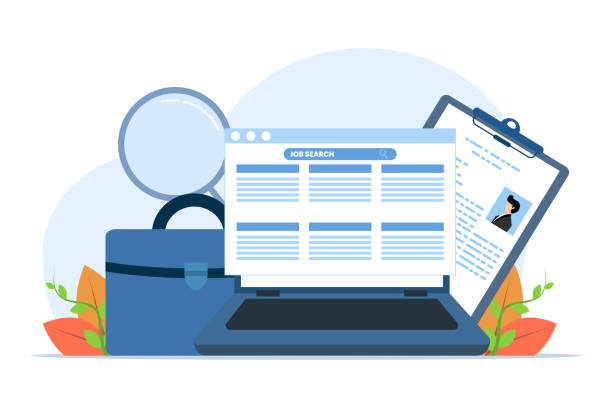
In today’s world, the importance of responsive design in personal website design is more evident than ever.
With the increasing use of mobile phones and tablets for internet browsing, your website must be designed to display correctly and beautifully on various screen sizes.
A responsive website automatically adjusts its layout and content to the user’s device, providing a seamless and optimized experience for every visitor.
This is not only vital for user satisfaction but also an important factor in SEO ranking, as search engines prefer mobile-friendly websites.
User Experience (UX) goes beyond responsiveness and addresses the overall interaction of the user with your website.
An excellent user experience means designing a website that has easy navigation, accessible content, fast loading speed, and attractive visual design.
Can users easily find the information they need? Are contact forms simple and practical? Are colors and fonts legible? These are questions that need to be answered in UX design.
From an analytical perspective, the better the user experience, the more time users spend on your site, the lower the bounce rate, and the higher the likelihood of their return.
This not only creates credibility for your personal website but also conveys your message more effectively to your audience.
As a guide, always put yourself in the user’s shoes and try to design user paths that are simple and intuitive.
Getting feedback from friends or conducting small user tests can help continuously improve your site’s UX.
Introducing Web Analytics and Tracking Tools
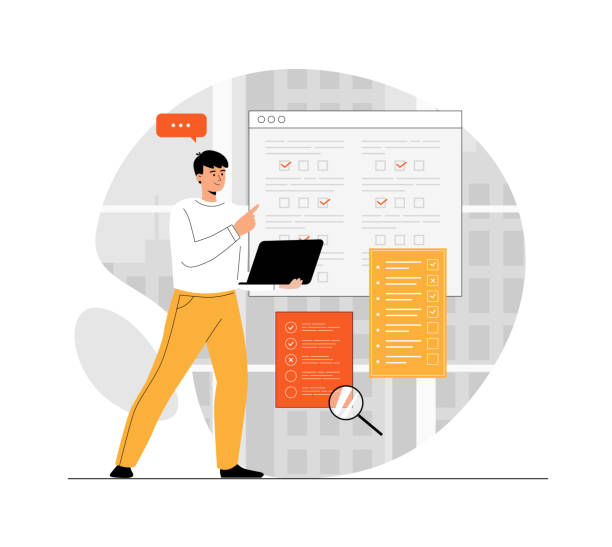
After launching and even during personal website design, using web analytics tools to understand user behavior and continuously improve the site is crucial.
These tools provide you with valuable information about site traffic, traffic sources, most visited pages, user time on site, and even their geographical location.
Google Analytics is undoubtedly the most popular and powerful tool in this field.
By installing the Analytics tracking code on your website, you can collect accurate data about your site’s performance.
This data helps you understand which of your content or marketing strategies have been most effective and which sections need optimization.
There are also other tools, each offering its specialized features.
Google Search Console is an essential tool for any website owner that provides direct information from Google about your site’s performance in search results.
You can see which keywords your site ranks for, which pages have indexing issues, and if Google has found any errors on your site.
Tools like Hotjar go further by providing heatmaps, user session recordings, and surveys, offering deeper insights into how users interact with your pages.
These analyses can help you with thought-provoking content and understanding why users leave a page.
Regular use of these tools allows you to make data-driven decisions to improve user experience, optimize content, and increase traffic to your personal website.
This is an analytical approach to site management that can help you grow significantly.
Table of Web Analytics Tools and Applications:
| Tool | Key Features | Main Application | Required Expertise Level |
|---|---|---|---|
| Google Analytics | Visit statistics, traffic sources, user behavior, conversion rate | Comprehensive analysis of site performance | Medium to High |
| Google Search Console | Search performance, indexing, site errors, backlinks | Monitoring site presence in Google results | Beginner to Medium |
| Hotjar | Heatmaps, session recordings, surveys, form analysis | Understanding real user behavior | Medium |
Personal Website Security and Maintenance
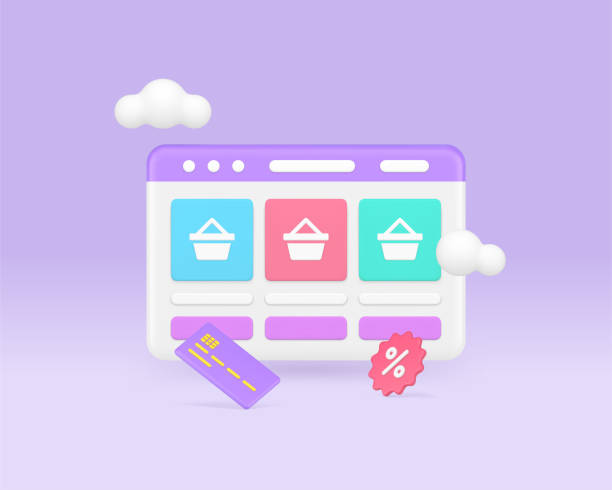
Security is the backbone of any personal or business website.
After investing time and energy in building a personal website and creating valuable content, the last thing you want is a security breach or data loss.
Security measures should be considered from the very beginning.
The first and most important step is using an SSL certificate, which encrypts the communication between the user’s browser and your website server.
This is not only vital for security but also beneficial for SEO, as Google prefers sites with SSL in rankings.
Your site’s address will change from HTTP to HTTPS.
In addition to SSL, you should regularly back up your website.
This ensures that in case of any problem (such as hacker attacks, server failures, or human error), you can restore your site to its original state.
Many hosting services offer automatic backup options, but manual backups are also recommended.
Also, using strong and unique passwords for your website’s admin panel and database, and enabling two-factor authentication (2FA), can add a significant layer of security.
If you use a CMS like WordPress, always ensure that your WordPress core, themes, and plugins are updated to the latest version, as updates often include security fixes.
A proactive approach to maintenance and security protects your investment in personal website design and prevents potential problems.
Are you dissatisfied with the low rate of converting visitors to customers on your e-commerce site?
With professional e-commerce website design by Rasaweb, solve this problem forever!
✅ Increase the visitor-to-customer conversion rate
✅ Create an excellent user experience and build customer trust
⚡ Get a free consultation!
Methods for Monetizing a Personal Website
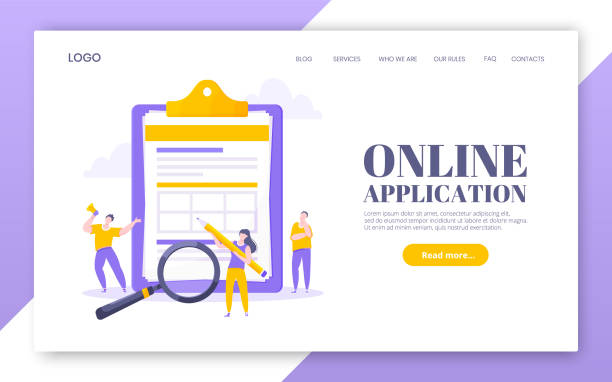
For many individuals, a personal website is not just an online resume, but can also be a source of income.
There are several methods for monetizing a personal website that you can utilize depending on your content and audience.
One of the most common methods is displaying advertisements, especially through platforms like Google AdSense.
This method allows you to rent out space on your site to display ads relevant to your content and earn income based on clicks or views.
Another method is Affiliate Marketing.
In this method, you promote others’ products or services on your website and receive a commission for each sale or action that occurs through your link.
This method is very suitable for bloggers and content creators.
If you have specific expertise, you can directly sell digital products such as eBooks, online courses, or website templates and plugins on your site.
Offering consulting services, coaching, or freelancing through your website is also a great way to earn income.
In this case, your website acts as a storefront for your services, allowing potential clients to learn about your work and contact you.
You can even offer your content through a Paywall or subscription model, accessible only to subscribers.
Choosing monetization methods should be accompanied by maintaining the authenticity and quality of your content to preserve audience trust.
This is an analytical and guiding aspect that helps you discover the true value of your personal website.
The Future of Personal Websites and New Trends

Finally, the world of personal website design is constantly evolving and facing new trends.
Awareness of these trends can help you keep your website always updated and attractive.
One of the most important current trends is Artificial Intelligence (AI) and Machine Learning in web.
These technologies can play a role in improving user experience through content personalization, responsive chatbots, and even SEO optimization.
In the near future, AI tools might automatically adjust your website content based on user behavior or even generate initial drafts of articles.
Other important trends include optimization for voice search, Virtual Reality (VR) and Augmented Reality (AR) on the web, and a greater focus on Web3 and blockchain technology.
Voice search has gained increasing importance due to the rise of voice assistants like Siri and Google Assistant, and website content needs to be optimized to answer verbal queries.
Although VR and AR might have limited applications for personal websites currently, in the future they could be an entertaining and interactive way to present content.
Another trend is No-Code/Low-Code design, which enables the creation of complex websites without the need for deep programming knowledge, and this trend will expand access to personal website design for more people.
These news and analytical trends show that the future of personal websites is moving towards becoming more interactive, smarter, and more accessible.
By embracing these changes and continuously updating your knowledge and website, you can maintain a strong and lasting online presence.
Frequently Asked Questions
| Question | Answer |
|---|---|
| 1. What is a personal website? | A website created by an individual to showcase personal information, resume, portfolio, interests, or blog. |
| 2. Why is having a personal website important? | It allows you to have a professional online presence, showcase your skills and experiences, connect with others, and manage your digital identity. |
| 3. What content should I put on my personal website? | Typically includes an About Me page, resume, portfolio, contact information, blog (optional), and gallery (if needed). |
| 4. How do I choose a suitable domain name for my personal website? | It is best to use your first and last name (e.g., yourname.com). Choose a name that is short, memorable, and relevant to your identity. |
| 5. Do I need coding knowledge to design a personal website? | No, using Content Management Systems (CMS) like WordPress or Website Builders like Wix or Squarespace, you can build your website without coding. |
| 6. What is hosting, and what type of hosting is suitable for a personal website? | Hosting is the space where your website files are stored to be accessible to the public. For a personal website, Shared Hosting is usually sufficient and cost-effective. |
| 7. What is the importance of Responsive Design for a personal website? | Responsive design ensures that your website displays correctly and with a proper appearance on all devices (computers, tablets, mobile phones), which is crucial for an excellent user experience. |
| 8. How can I optimize my personal website for search engines (SEO)? | By using relevant keywords, producing quality content, optimizing images, having a proper URL structure, and acquiring backlinks, you can improve your website’s SEO. |
| 9. How do I keep my personal website updated? | Regularly add new content (such as blog posts or new portfolio items), keep contact information updated, and ensure that the software and plugins used are up-to-date. |
| 10. Can I use my personal website to earn income? | Yes, you can earn income by selling your own products or services, through advertising, affiliate marketing, or by offering specialized consultations, depending on your content and goals. |
And other services of Rasaweb Advertising Agency in the field of advertising
Investigating the Impact of Advertising on Increasing Sales of Low-Priced Products
How to Use Advertisements to Provide Practical Customer Experiences?
The Impact of Online Job Banks on Increasing Sales for Pet Supply Manufacturers
Optimal Strategies for Effective Ad Placement in Online Job Banks
How to Choose Online Job Banks for Pet Supply Ad Placement
And over hundreds of other services in the field of online advertising, advertising consulting, and organizational solutions
Internet Advertising | Advertising Strategy | Advertorials
🚀 To reach the pinnacles of success in the digital world, Rasaweb Afarin Digital Marketing Agency, specializing in user-friendly website design and comprehensive online marketing strategies, is your reliable partner.
📍 Tehran, Mirdamad Street, next to Bank Markazi, Southern Kazeroun Alley, Ramin Alley, No. 6

